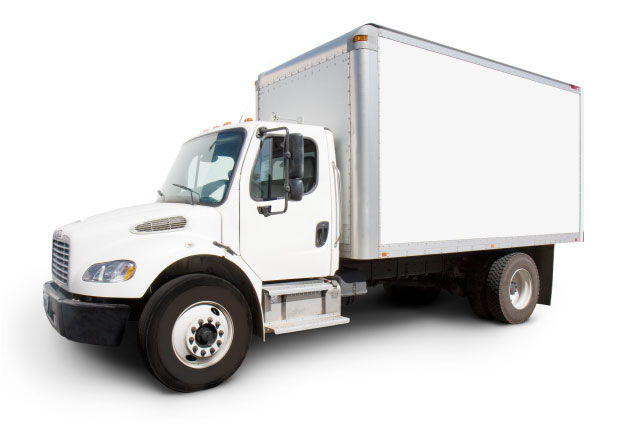Effective Ways to Protect Your Sofa During Long-Term Storage
Posted on 18/05/2025
Effective Ways to Protect Your Sofa During Long-Term Storage
Storing your sofa for an extended period can pose significant risks to its condition and longevity. Whether you are moving, remodeling, or simply need extra space, proper preparation is crucial to ensure your couch remains in pristine shape. In this comprehensive guide, we discuss the most effective tips and best practices to protect your sofa during long-term storage, ensuring it emerges looking as good as the day it went in.
Why Proper Sofa Storage Matters
When left unchecked, dust, pests, moisture, and improper handling can severely compromise your sofa's integrity. Adequate preparation and storage methods not only preserve your sofa's looks but also its comfort and value.
- Prevents odor and mold: Sofas are susceptible to absorbing moisture and smells if not stored correctly.
- Guards against pests: Without protection, your sofa may become a nesting site for insects, rodents, or mites.
- Maintains structural integrity: The right support and coverings prevent warping, fabric fading, or cushion flattening.
- Saves future cost: Protecting your couch reduces the need for costly professional cleaning or repairs afterward.

Step-by-Step Guide: How to Protect Your Sofa in Storage
1. Clean Your Sofa Thoroughly
Cleaning is the crucial first step in preparing your sofa for long-term storage. Any lingering dirt, food crumbs, pet hair, or spilled liquids can foster bacteria or mold growth over time.
- Remove cushions and vacuum all surfaces, including crevices and seams.
- Spot-clean stains using appropriate cleaners for leather, fabric, or microfiber sofas.
- Allow the sofa to dry completely before packing, as even slight dampness can lead to mildew.
2. Disassemble if Possible
Many modern sofas allow for easy disassembly. This not only makes moving and storing easier but also helps prevent stress on joints and attachments.
- Remove legs, cushions, and detachable armrests.
- Label the pieces and store screws or fittings in marked bags.
- Wrap each piece individually for extra protection.
3. Choose the Right Storage Facility
Not all storage spaces are created equal when it comes to furniture protection. The ideal storage facility should be:
- Clean and secure to prevent theft and accidental damage.
- Climate-controlled to protect against temperature extremes and humidity, which may cause wood to warp and fabrics to mold.
- Accessible enough for easy movement but not prone to water leaks or flooding risks.
4. Use Quality Sofa Covers and Wrapping Materials
Wrapping your sofa correctly is one of the most effective ways to shield it during long-term storage.
- Breathable covers: Use specially-designed fabric sofa storage covers. Avoid thick plastic wraps that trap moisture unless you use moisture absorbers.
- Bubble wrap or moving blankets: For areas exposed to possible bumps or scratches, cover the arms and corners with padded materials.
- Tape and seal: Use packing tape to keep covers in place, but avoid taping directly onto sofa surfaces as this can damage finishes.
5. Protect Against Moisture and Pests
Moisture and pests are silent destroyers when it comes to long-term sofa storage. There are several proactive measures you can take:
- Desiccant packs: Place silica gel or moisture-absorbing packs inside the sofa or storage cover to prevent dampness.
- Pest deterrents: Natural cedar blocks or lavender sachets can repel insects and rodents without harsh chemicals.
- Inspect regularly: If possible, check your storage unit every few months for signs of pests or water intrusion.
6. Properly Position Your Sofa in Storage
The way your couch is placed inside the storage unit matters more than you might realize.
- Elevate the sofa: Use pallets or blocks to lift the sofa off the floor, protecting it from cold, damp ground and potential flooding.
- Upright orientation: Store sofas in their normal upright position. Never balance them on ends or stack heavy objects on top, which can permanently deform cushions or frame.
- Leave breathing space: Ensure some distance between the sofa and the unit's walls to allow air circulation and prevent mold growth.
Common Mistakes to Avoid When Storing a Sofa Long-Term
Proper sofa protection during long-term storage requires attention to detail. Avoiding these frequent errors will help preserve your furniture's value:
- *Using plastic wrap exclusively*: Plastic traps moisture and encourages mildew. Always combine with breathable layers or use storage-specific covers.
- *Forgetting to clean the sofa first*: Unremoved crumbs, stains, or spills become harder to clean and attract bugs after months in storage.
- *Ignoring the storage environment*: Non-climate-controlled units expose sofas to damaging humidity and temperature swings.
- *Stacking items on top of the sofa*: This can lead to permanent indentations or even broken frames.
- *Neglecting periodic inspections*: Out of sight shouldn't mean out of mind. Inspections enable early detection of issues before they escalate.
Best Protective Products for Long-Term Sofa Storage
Selecting the best materials for sofa protection helps guarantee optimal results during months or even years in storage. Here are some top-rated options:
- Breathable sofa covers: Look for woven fabric or non-woven polypropylene covers designed for long-term furniture storage.
- Moisture absorbers: Silica gel packets and charcoal bags help keep humidity in check inside covered or wrapped sofas.
- Padded moving blankets: These add a layer of shock absorption for delicate corners and arms, especially during transit.
- Industrial stretch wrap: Use sparingly and only as the outermost layer, combined with other breathable materials underneath.
Preparing Different Types of Sofas for Storage
Fabric Sofas
- Vacuum and clean thoroughly to remove all dust, dirt, and potential allergens.
- Spot treat fabric with a suitable upholstery cleaner.
- Use a breathable storage cover to prevent condensation.
Leather Sofas
- Clean with leather-safe products to maintain suppleness and prevent drying out.
- Condition the leather before storage to add a protective barrier.
- Keep away from direct heat sources, even in storage, to prevent cracking.
Sectionals and Modular Sofas
- Disassemble all components and wrap individually.
- Label connectors and hardware for easy reassembly.
- Stack any detached modules upright (not flat or piled) to prevent distortion.
Long-Term vs. Short-Term Sofa Storage: Key Differences
Understanding the distinction between long-term vs. short-term sofa storage helps you determine the level of preparation and protection needed.
- Short-term storage: (A few weeks to a couple of months) Focus on dust covers and safe placement. Moisture control is less critical but still important.
- Long-term storage: (Several months to years) Requires more comprehensive measures such as climate control, in-depth cleaning, moisture prevention, pest deterrents, and rigorous wrapping.

Frequently Asked Questions About Sofa Storage Protection
How do I prevent my sofa from smelling musty after long-term storage?
Clean and dry your sofa completely before storing. Use moisture absorbers, and opt for breathable covers to allow air flow. Regularly inspect and air out the storage area if possible.
Is it okay to store my sofa in a regular garage or basement?
While basements and garages are convenient, they're often humid and prone to pests. A climate-controlled storage unit is best for long-term sofa preservation.
How often should I check on my stored sofa?
If possible, inspect your sofa every 2-3 months during long-term storage. Look for any signs of damage, moisture, or pests.
Can I stack boxes or furniture on top of my sofa?
No. Placing weights or boxes on top of your sofa can damage the frame or leave permanent marks on the upholstery.
Conclusion: Key Takeaways for Effective Sofa Protection in Long-Term Storage
Protecting your sofa during long-term storage doesn't have to be daunting. By cleaning thoroughly, choosing the right storage environment, wrapping carefully, and following proven best practices, you can ensure your valuable furniture remains in great condition for years to come.
Remember these essential tips:
- Always clean and dry your sofa before storing.
- Use breathable, protective covers or wrapping materials.
- Store in a climate-controlled unit when possible.
- Elevate your sofa to avoid floor moisture.
- Inspect periodically and maintain airflow whenever you can.
With the right precautions, your sofa will remain protected, comfortable, and ready for use again whenever you need it. Following these effective ways to safeguard your couch during extended storage guarantees peace of mind and a refreshed living space in the future.





